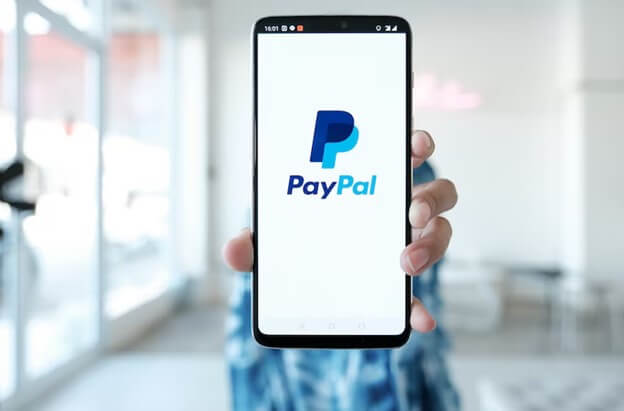Social Media Day: Social Commerce in the Middle East and the Role of PayTabs

As a forward-thinking business owner in the Middle East with an online presence, June 30 deserves your attention. It is observed as the Social Media Day and for good reason. Besides blurring geographical boundaries and connecting friends and families, social media platforms entertain, inform, and even ease business nowadays. In fact, penetration of active social network in the UAE is currently at 115%. Hence, apart from forging and strengthening relationships with potential and existing customers through channels like Instagram, Facebook, and TikTok, it is a smart idea to sell your products directly on these social pages. Through a suitable gateway for online payment integration, you can also simplify and speed up the checkout process without the customer having to head to your online store.
So, this Social Media Day, let’s see how you can make the most of social commerce in the Middle East and how PayTabs can help.
Ways to Capitalize on Social Commerce in the Middle East
Listed below are some effective hacks to thrive in the social commerce landscape. Based on the size and nature of your business as well as budget, try one or more of these this Social Media Day.
- Upsell Strategically: Social media channels are most appropriate for advertising modestly-priced products that customers are more likely to buy on an impulse. And once they buy an affordable item, you can upsell something relevant but pricier.
- Leverage User-generated Content (UGC): Nowadays, customers believe what others like them say or endorse rather than what brands claim, which makes UGC one of the popular social commerce trends. So, encourage current users of your products to create content and share the same on your social media pages to inspire others. In fact, the best stories can act as Social Media Day highlights on your page.
- Enable Livestream Shopping: In this, you can post short, engaging, and live videos that allow customers to purchase the showcased items directly. Since this format is highly interactive, you are likely to drive more sales.
- Join Hands with Micro-Influencers: Influencer marketing and commerce is on the rise in the Middle East, just like anywhere else. Similar to UGC, it can help you brand earn the trust of potential customers and boost conversion. So, connect with micro-influencers to promote your products, their usage, and the aspirational values associated with them.
- Use Augmented Reality (AR): With AR, you can make the social media shopping experience more immersive, interactive, and engaging for customers. They can get a realistic feel of clothes, shoes, jewelry, cosmetics, homeware, and other items this way and become more interested in making a purchase.
Apart from the above tips, you need a secure and efficient system to accept social media payments quickly. Let’s understand the role PayTabs can play in this regard.
How PayTabs Simplifies Social Commerce
Paymes is one of the innovative PayTabs payment solutions you can use to sell easily and earn instantly on social media platforms. Effective across popular channels like Twitter, Facebook, Instagram, and WhatsApp, Paymes allows you to get paid without going through any documentation hassle. Here are the other advantages:
- No Need for a Website: Even if you don’t have a website, it is easy to set up shop pages or mini ecommerce pages with Paymes and customize them anyway you want. You can add, remove, or update products via a single platform and manage what you exhibit to customers effortlessly.
- Works on All Devices: You can access and use Paymes on all devices as well as collect social media payments without any hiccups. So, whether you are in your office, physical store, or travelling, you can manage your business and earn from anywhere and anytime.
- Ease of Accepting Payments: Using the Paymes dashboard, you can create a product link and send it to customers via social media channels, chats, emails, or texts. The link will contain a product’s photo, description, and price. By clicking on the same, customers can make the payment in seconds. Another option is to create a static QR code and share it with customers to scan and make payments. They won’t need to register or download apps to go through with the transaction.
- Multipurpose Dashboard: The Paymes dashboard is a unified platform that allows you to do everything from setting up a store and creating payment links and QR codes to managing turnover and cash flow, and tracking product details and buyer information. In other words, you will have every single crucial data point at your fingertips round the clock. You can analyze the same, identify gaps if any, and strengthen your unique selling points.
- Cybersecurity: Like other PayTabs payment solutions, Paymes comes with robust security measures to keep customer and transaction data safe. It makes it easy to spot and prevent frauds, which helps you earn customer trust.
- Seamless Order Tracking: It is easy to track packages on any device with Paymes, which means you can manage your logistics efficiently. By ensuring that customers receive the right orders on time, you can keep them satisfied enough to shop from you again in the future.
- Affordable Pricing: Paymes’ pay-as-you-go pricing model is convenient for most businesses and the commission rate is easy on the pocket, even if you own a startup. Installation is free of cost and there are zero hidden charges.
Make June 30 Social Media Day Celebrations Special
By now, you have a fair idea about the strategies that can give you a competitive edge in social commerce and how adopting PayTabs’ Paymes can help you get paid quickly, safely, and without any friction. So, keep this guide handy to take your business to new heights this Social Media Day, reach out to more people (especially Gen Z), improve engagement, earn customer confidence, sell more than ever, and boost revenue. The social commerce ecosystem is growing rapidly in the Middle East and the time is right for you to make the most of it.







